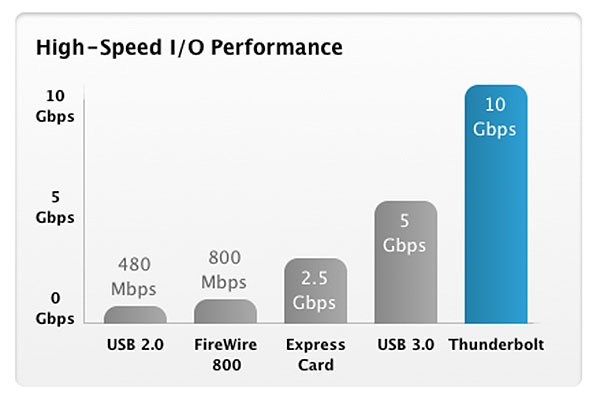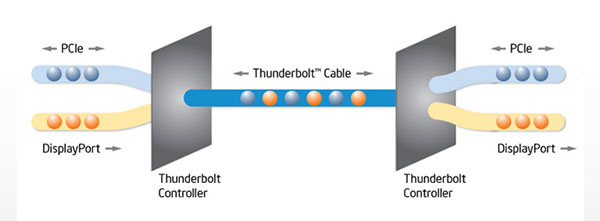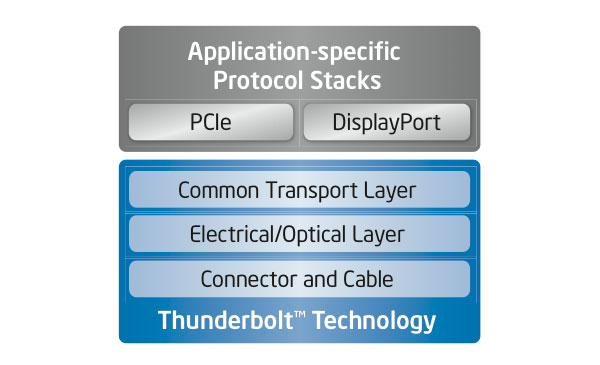Thunderbolt Ups the Ante for HTPCs


Developed by Intel in collaboration with Apple, Thunderbolt is a superfast interface that can carry two channels of fully bi-directional traffic at 10 gigabits/second per channel in each direction on one cable. At that speed, a full-length HD movie can be transferred from one device to another in less than 30 seconds, and a full year of continuous MP3 files can be backed up in about 10 minutes.

Thunderbolt supports two data protocolsPCI Express and DisplayPortsimultaneously. It's compatible with existing DisplayPort devices and uses a DisplayPort or Mini DisplayPort connector; adaptors can be used to connect to HDMI, DVI, or VGA ports as well as USB, FireWire, and eSATA products. Up to seven devices can be daisy-chained without sacrificing performance, and bus-powered products can receive up to 10 watts of power, compared with 8W for FireWire 800 and 5W for USB. The initial Apple implementation uses copper wires, which are limited to 3 meters in length, but fiber-optic cables of much greater length are also possible, though no bus power is available in this case.

At the heart of Thunderbolt is a low-power switching architecture and highly efficient, low-overhead packet format with flexible QoS (quality of service) support that allows bursty PCIe traffic and isochronous (constant-timing) DisplayPort communication to be combined on the same link. A novel synchronization protocol allows all connected Thunderbolt devices to synchronize their time within 8 nanoseconds of each other.
QoS and tight synchronization are vital for high-quality media playback, and a superfast data rate means that Thunderbolt will have no problem with high-def video and beyond, including 4K and perhaps even UltraHD. This technology will first be used by content creators, but it could soon find its way into consumer products, bringing new capabilities to home-theater PCs as they become ever-more mainstream source devices.
























































